What are the advantages and disadvantages of a standard horn antenna compared to other antennas?
Standard Horn Antennas represent one of the most versatile solutions in the field of microwave and millimeter-wave technology. These antennas, characterized by their flared waveguide structure, offer a unique combination of high directivity, broad bandwidth, and reliable performance that distinguishes them from other antenna types. When evaluating antenna options for various applications, understanding the comparative advantages and limitations of Standard Horn Antennas becomes essential for engineers and technical professionals seeking optimal signal transmission and reception capabilities.
Fundamental Advantages of Standard Horn Antennas
Superior Directivity and Gain Performance
Standard Horn Antennas excel in providing exceptional directivity and gain compared to many other antenna types. This performance characteristic stems from their carefully engineered flared design, which effectively transforms the waveguide mode into a radiating electromagnetic wave with minimal losses. The Standard Horn Antenna's ability to concentrate energy in a specific direction makes it particularly valuable in applications requiring precision targeting of radio frequency signals. While omnidirectional antennas disperse energy in all directions, horn antennas can achieve gains ranging from 10 dB to 25 dB, depending on the design specifications. Advanced Microwave Technologies Co., Ltd. manufactures these antennas with precision-engineered dimensions to ensure optimal gain values across different frequency ranges.
The superior directivity of Standard Horn Antennas also translates to greater effective range for the same input power compared to less directive antennas. This efficiency becomes particularly important in long-distance communication systems where power conservation is critical. Additionally, the controlled radiation pattern minimizes interference with adjacent systems, making horn antennas ideal for densely populated frequency environments. The high-gain characteristics remain consistent across wide frequency ranges, with Advanced Microwave's horn antennas maintaining performance from 1 GHz to an impressive 110 GHz, far exceeding the stable operational range of many alternative antenna designs. This combination of directivity, gain, and consistency across frequencies creates a significant performance advantage over patch antennas, dipoles, and other less directive options in applications requiring focused energy transmission.
Exceptional Bandwidth Capabilities
One of the most significant advantages of Standard Horn Antennas is their naturally broadband performance capabilities. Unlike resonant antennas that operate efficiently only within narrow frequency bands, horn antennas maintain consistent impedance matching and radiation characteristics across much wider frequency ranges. This broadband functionality stems from the horn's gradually expanding waveguide structure, which creates a smooth transition between the feeding waveguide and free space. Advanced Microwave's Standard Horn Antennas leverage this inherent design advantage to deliver stable performance across multiple frequency bands without requiring complex matching networks or additional components.
The bandwidth capabilities of Standard Horn Antennas make them exceptionally versatile for applications requiring operation across multiple frequencies or frequency-hopping systems. While patch antennas typically offer bandwidths of 2-5% of their center frequency, horn antennas routinely achieve bandwidths exceeding 100% of their center frequency, depending on the specific design. This expansive coverage eliminates the need for multiple antennas in systems operating across wide frequency ranges, reducing system complexity and potential points of failure. Moreover, the consistent VSWR (Voltage Standing Wave Ratio) of ≤1.5:1 across the operational bandwidth ensures minimal signal reflection, maximizing power transfer efficiency. For research institutions and industries working with evolving communication standards or multiple frequency bands simultaneously, this bandwidth advantage represents a critical operational benefit that few other antenna types can match.
Robust Construction and Environmental Durability
Standard Horn Antennas offer exceptional durability and reliability in challenging environments, representing a significant advantage over more delicate antenna types. Constructed from high-quality aluminum alloy or brass with corrosion-resistant coatings, these antennas withstand harsh conditions including temperature extremes, humidity, and exposure to environmental contaminants. Advanced Microwave Technologies manufactures these antennas with meticulous attention to material selection and finishing processes, ensuring long-term performance stability even in outdoor installations or industrial settings. The robust construction eliminates common failure points found in more complex antenna designs, resulting in extended operational lifespans and reduced maintenance requirements.
The inherent structural integrity of Standard Horn Antennas provides resistance to physical impacts and vibrations that would compromise the performance of more sensitive antenna types. Unlike microstrip or printed antennas that can delaminate or crack under stress, the solid metal construction of horn antennas maintains consistent electrical properties despite mechanical challenges. This durability translates directly to reliability in mission-critical applications such as defense systems, satellite communications, and aerospace installations where antenna failure could have serious consequences. Additionally, the simple, open structure of horn antennas prevents issues with water ingress or contamination accumulation that plague enclosed antenna designs. With proper installation, Advanced Microwave's Standard Horn Antennas often remain in service for decades without degradation in performance, representing an outstanding return on investment compared to less durable alternatives that require frequent replacement or maintenance in similar operating conditions.

Limitations and Considerations
Size and Weight Constraints
Standard Horn Antennas, despite their numerous performance advantages, present certain challenges related to their physical dimensions that must be considered during system design. The dimensional requirements of these antennas increase significantly at lower frequencies, potentially creating integration difficulties in space-constrained applications. While Advanced Microwave Technologies has engineered their Standard Horn Antennas to be as lightweight as possible through optimized material selection and manufacturing techniques, the fundamental physics of horn antenna design dictates that achieving higher gain values requires larger aperture dimensions. This size-to-performance relationship means that high-gain horn antennas operating in the lower GHz ranges may become prohibitively large for mobile applications or compact installation environments.
The physical dimensions of Standard Horn Antennas create practical limitations that contrast sharply with more compact antenna options like patch antennas or integrated antennas on PCB substrates. In applications where installation space is severely restricted, such as in portable devices or small unmanned vehicles, the dimensional requirements of horn antennas may necessitate performance compromises or alternative antenna solutions. Additionally, the protruding nature of horn antennas creates aerodynamic and mechanical challenges in high-velocity applications or environments with strict form factor requirements. While Advanced Microwave offers customization options to address size concerns, including specialized compact designs for specific frequency ranges, the fundamental relationship between wavelength, gain, and physical dimensions remains an inherent limitation. System designers must carefully weigh these spatial requirements against the superior performance characteristics when evaluating Standard Horn Antennas for space-constrained applications.
Manufacturing Complexity and Cost Factors
The precision engineering required for Standard Horn Antennas introduces manufacturing complexities that affect both production processes and cost considerations. Unlike simpler antenna designs that can be produced with automated PCB fabrication techniques, horn antennas demand specialized machining processes to achieve the precise dimensional tolerances necessary for optimal performance. Advanced Microwave Technologies has developed sophisticated manufacturing capabilities to ensure exact specifications are met, but this precision craftsmanship inevitably impacts production costs and lead times compared to mass-produced antenna alternatives. The machining requirements become particularly demanding at higher frequencies, where even microscopic dimensional variations can significantly affect antenna performance.
The manufacturing complexity of Standard Horn Antennas results in higher unit costs compared to simpler antenna designs, particularly in low-volume production scenarios. While patch antennas, dipoles, or printed antennas benefit from economies of scale and automated manufacturing processes, each horn antenna requires individual machining, assembly, and testing to ensure performance specifications are achieved. This specialized production process increases both material and labor costs, making horn antennas a more significant investment, especially for projects with limited budgets. Additionally, custom modifications or non-standard specifications further increase manufacturing complexity and associated costs. Advanced Microwave Technologies mitigates these challenges through efficient production processes and strategic material sourcing, but the inherent complexity of precisely machining and assembling horn antennas remains a consideration when comparing them to simpler antenna alternatives. For applications where performance requirements justify the investment, these manufacturing complexities are acceptable trade-offs for the superior capabilities that properly manufactured horn antennas deliver.
Integration and Mounting Challenges
Standard Horn Antennas present unique integration challenges that must be addressed during system design and installation. The waveguide feed structure typically requires specific interface connections that are more complex than the simple coaxial connections used with many other antenna types. While Advanced Microwave Technologies provides various connector options including SMA, N-Type, or custom solutions to facilitate integration, the mechanical interface between the horn antenna and the rest of the RF system demands careful engineering consideration. This connection complexity becomes particularly relevant in systems requiring frequent reconfiguration or those with severe space constraints around the feed point.
The mounting requirements for Standard Horn Antennas introduce additional challenges compared to lower-profile alternatives. The substantial weight of precision-machined metal horns, especially larger models for lower frequencies or higher gain applications, necessitates robust mounting structures capable of supporting the antenna while maintaining precise alignment. This requirement becomes particularly demanding in mobile applications or installations subject to vibration, where maintaining antenna positioning is critical for performance. Additionally, the protruding profile of horn antennas creates vulnerability to wind loading and mechanical impacts that must be addressed through appropriate installation planning. The horn's radiation pattern can also be affected by nearby structures or mounting hardware, requiring careful consideration of the antenna's surroundings during installation design. Advanced Microwave Technologies provides mounting guidance and custom interface solutions to address these challenges, but system integrators must still account for these factors when evaluating horn antennas against more easily mounted alternatives. Despite these integration considerations, the superior performance characteristics of properly installed horn antennas often justify the additional mounting complexity for applications where signal quality and reliability are paramount.

Application-Specific Performance Analysis
Critical Advantages in Test and Measurement Applications
Standard Horn Antennas offer exceptional advantages in test and measurement environments where precise, reliable, and repeatable performance is essential. The well-defined radiation patterns and stable gain characteristics across frequency ranges make these antennas the preferred choice for calibration procedures, antenna pattern measurements, and electromagnetic compatibility testing. Advanced Microwave Technologies designs their Standard Horn Antennas with meticulous attention to dimensional stability and electrical performance consistency, ensuring that measurement results remain reliable over time and across different test setups. The antennas' linear polarization characteristics (with options for circular polarization when required) provide clear reference standards for evaluating the polarization performance of devices under test, a critical capability that simpler antenna designs cannot match with the same precision.
The Standard Horn Antenna's ability to handle high power levels without distortion or performance degradation makes it particularly valuable in testing high-power transmitters and amplifiers. Unlike many other antenna types with lower power handling capabilities, horn antennas can withstand significant input power without suffering thermal damage or altered electrical characteristics. This robustness enables accurate measurement of high-power systems without introducing measurement errors due to antenna limitations. Additionally, the broad frequency coverage from 1 GHz to 110 GHz allows a single measurement setup to characterize device performance across multiple bands without changing antennas, improving test efficiency and reducing potential variables in the measurement system. Advanced Microwave's horn antennas also maintain exceptional front-to-back ratios, minimizing unwanted reflections or rear radiation that could compromise measurement accuracy in laboratory environments. For research institutions, quality control facilities, and manufacturing test systems, these performance advantages in precision measurement scenarios represent critical capabilities that few alternative antenna technologies can match with the same level of reliability and consistency.
Performance Considerations in Communication Systems
Standard Horn Antennas provide significant advantages in point-to-point communication systems where directional performance and signal integrity are paramount. The high gain characteristics, typically ranging from 10 dB to 25 dB, enable longer communication distances with lower transmit power compared to less directive antenna options. This efficiency is particularly valuable in applications with limited power budgets or where minimizing interference with adjacent systems is critical. Advanced Microwave Technologies' Standard Horn Antennas maintain low VSWR values (≤1.5:1) across their operational bandwidth, ensuring excellent impedance matching that maximizes power transfer and minimizes signal reflections that could degrade communication quality. For fixed installation communication links in applications such as building-to-building connectivity, remote monitoring stations, or backhaul networks, these performance attributes translate directly to improved reliability and throughput.
However, Standard Horn Antennas present certain limitations in communication scenarios requiring mobility or omnidirectional coverage. The highly directional radiation pattern that provides advantages in fixed point-to-point links becomes a limitation in applications requiring broader spatial coverage or when dealing with moving transmitters or receivers. Unlike sector antennas or array systems that can provide wider beam patterns or electronic steering capabilities, standard horn designs have fixed radiation characteristics that require precise physical alignment between transmitter and receiver. Additionally, while horn antennas excel in long-distance links with clear line-of-sight paths, their performance advantages diminish in multipath-rich environments typical of urban or indoor settings, where reflections and scattering dominate propagation. Advanced Microwave Technologies addresses these challenges through customized horn designs with modified radiation patterns for specific coverage requirements, but system designers must carefully evaluate whether the directional characteristics of Standard Horn Antennas align with their communication system requirements. For applications prioritizing link distance, signal quality, and interference rejection over coverage flexibility, horn antennas often represent the optimal choice despite these application-specific considerations.
Effectiveness in Radar and Remote Sensing Systems
Standard Horn Antennas demonstrate exceptional effectiveness in radar and remote sensing applications where precise beam control and signal fidelity are essential performance metrics. The well-defined radiation patterns with minimal sidelobes enable accurate target discrimination and reduced false returns compared to antennas with poorer pattern control. Advanced Microwave Technologies manufactures Standard Horn Antennas with tightly controlled phase centers and minimal pattern distortion across frequency ranges, ensuring consistent performance in wideband radar systems or frequency-diverse sensing applications. These characteristics prove particularly valuable in scientific instrumentation, weather radar systems, and precision measurement radar, where accurate spatial resolution and reliable detection sensitivity directly impact system effectiveness.
The durability and environmental stability of Standard Horn Antennas provide additional advantages in remote sensing deployments subject to harsh conditions. Unlike array antennas with complex feed networks vulnerable to environmental degradation, or microstrip antennas susceptible to performance shifts with temperature variations, horn antennas maintain consistent electrical characteristics across wide temperature ranges and environmental exposures. This stability eliminates measurement drift in long-term monitoring applications and ensures reliable operation in all-weather installations. Advanced Microwave's corrosion-resistant materials and protective coatings further enhance this environmental resilience, making their Standard Horn Antennas ideal for remote unattended sensing stations or permanent outdoor radar installations. Additionally, the horn antenna's inherent power handling capabilities support high-power radar transmitters without degradation, while their excellent isolation characteristics minimize transmit-to-receive leakage in monostatic radar configurations. For system integrators developing radar or sensing systems with demanding performance requirements, these combined advantages position Standard Horn Antennas as superior options compared to less robust or less predictable antenna alternatives, despite the additional size and mounting considerations they may present.
Conclusion
Standard Horn Antennas offer significant advantages including superior gain, exceptional bandwidth, and robust construction, making them ideal for precision applications despite size limitations and higher manufacturing costs. Their performance in test, communication, and radar systems demonstrates their value across industries. Advanced Microwave Technologies leverages 20+ years of experience to deliver high-quality, customizable horn antennas that meet diverse technical requirements with perfect supply chain management, fast delivery, and comprehensive after-sales support. For customized Standard Horn Antenna solutions tailored to your specific needs, contact our expert team at sales@admicrowave.com.
References
1. Johnson, R.C. and Jasik, H. (2022). Antenna Engineering Handbook, 5th Edition. McGraw-Hill Education.
2. Balanis, C.A. (2021). Antenna Theory: Analysis and Design, 5th Edition. Wiley.
3. Milligan, T.A. (2020). Modern Antenna Design, 3rd Edition. Wiley-IEEE Press.
4. Pozar, D.M. (2019). Microwave Engineering, 5th Edition. Wiley.
5. Volakis, J.L. (2018). Antenna Engineering Handbook, 4th Edition. McGraw-Hill Professional.
6. Chang, K. (2019). RF and Microwave Wireless Systems. Wiley-Interscience.
YOU MAY LIKE
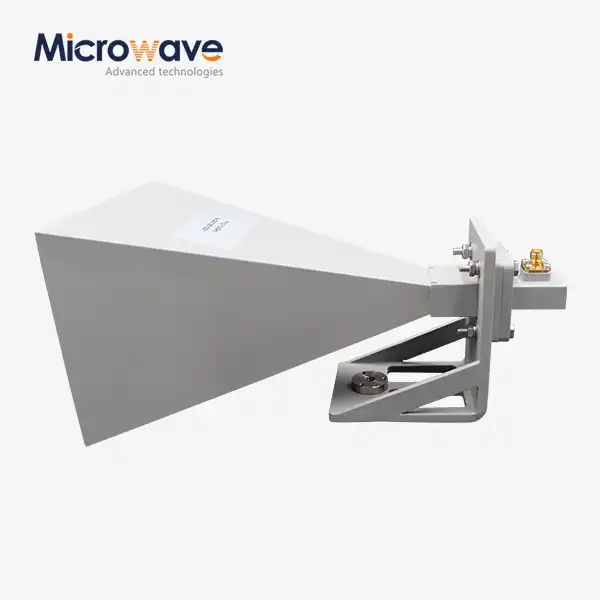 VIEW MOREStandard Horn Antenna
VIEW MOREStandard Horn Antenna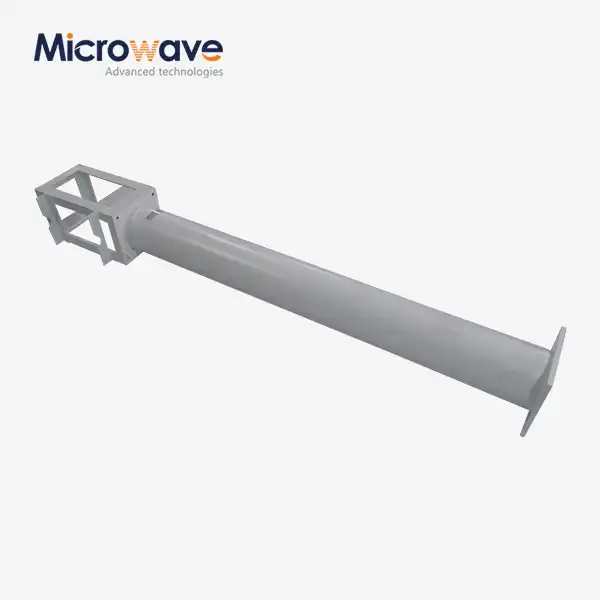 VIEW MOREMMDS Transmitting Antenna
VIEW MOREMMDS Transmitting Antenna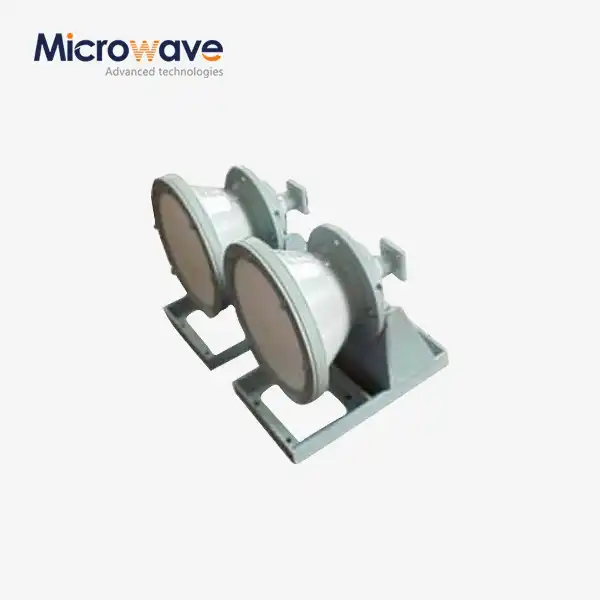 VIEW MOREConical Horn Lens Antenna
VIEW MOREConical Horn Lens Antenna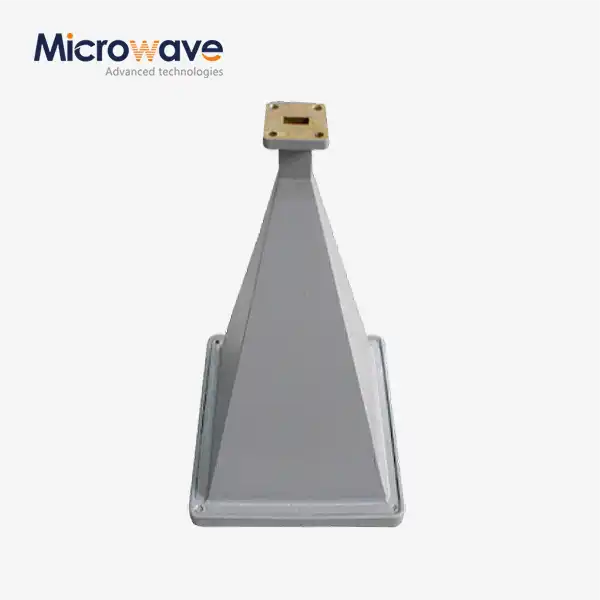 VIEW MOREPyramid Horn Lens Antenna
VIEW MOREPyramid Horn Lens Antenna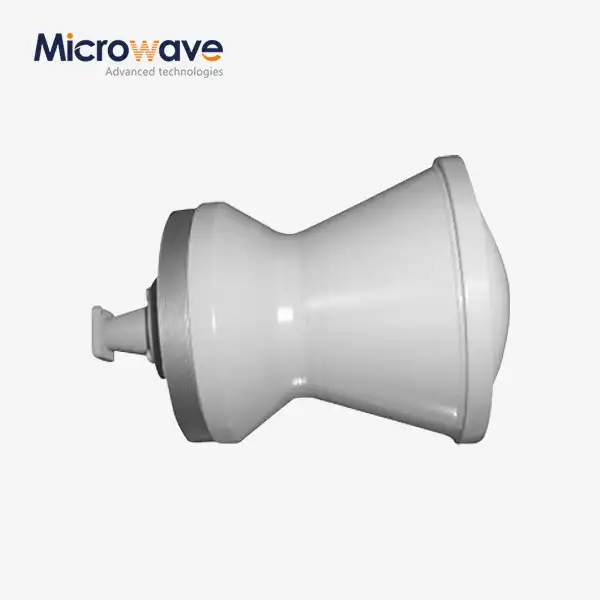 VIEW MOREPoint Focusing Horn Lens Antenna
VIEW MOREPoint Focusing Horn Lens Antenna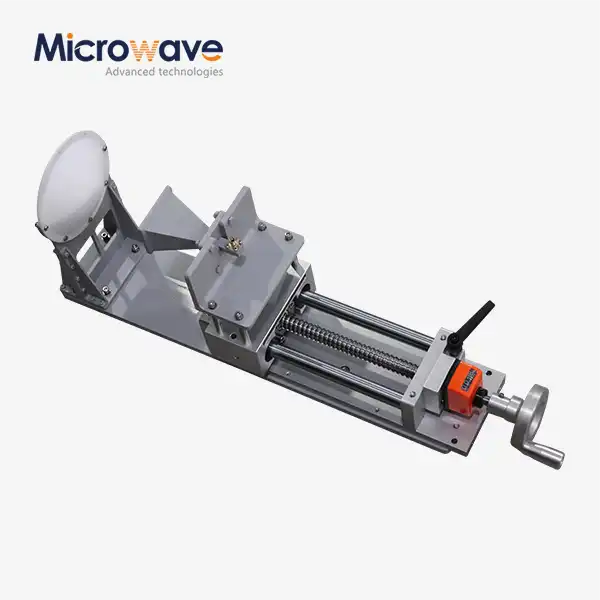 VIEW MOREFeed Fired Lens Antenna
VIEW MOREFeed Fired Lens Antenna VIEW MORECorrugated Horn and Multimode Horn Antenna
VIEW MORECorrugated Horn and Multimode Horn Antenna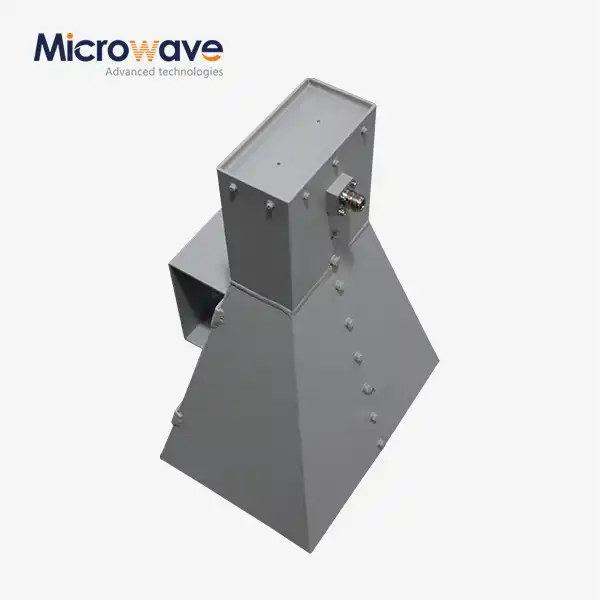 VIEW MOREWideband Double-ridged Horn Antenna
VIEW MOREWideband Double-ridged Horn Antenna




